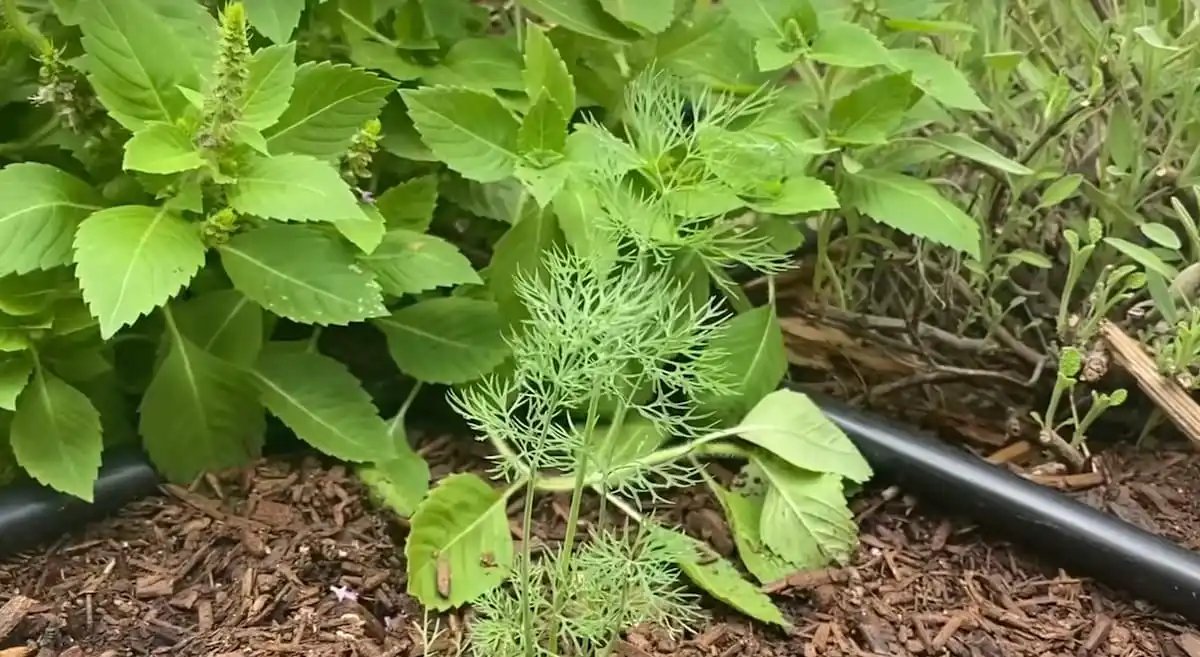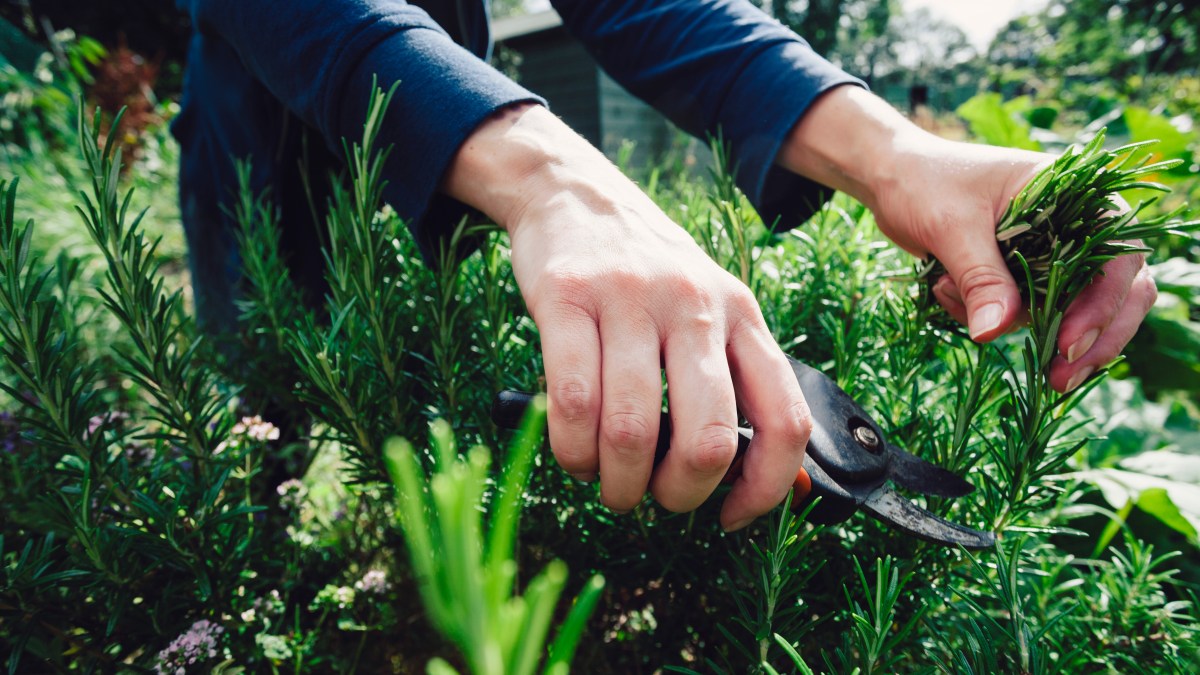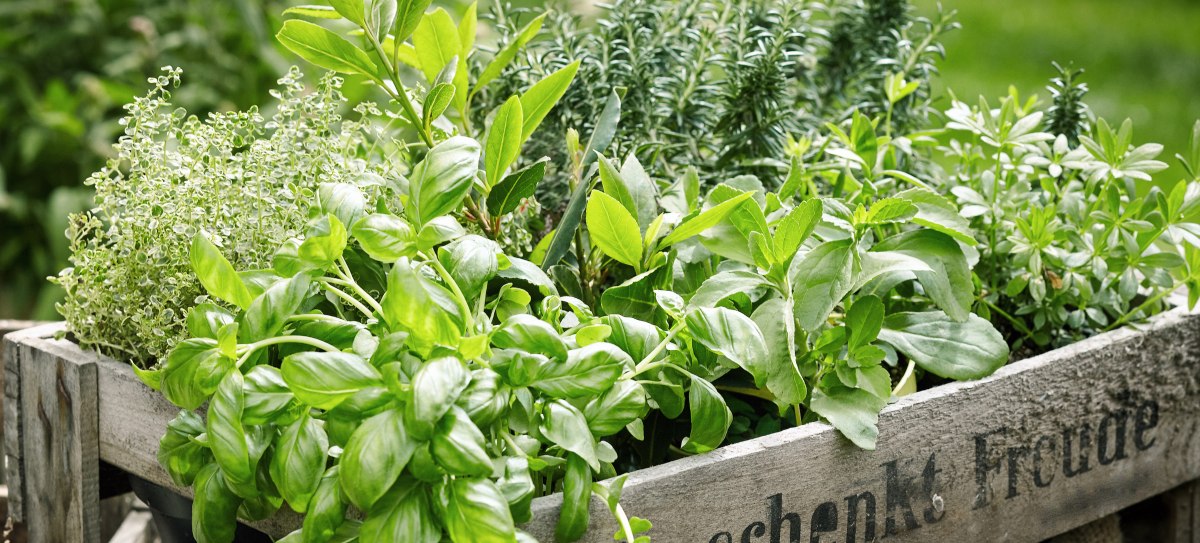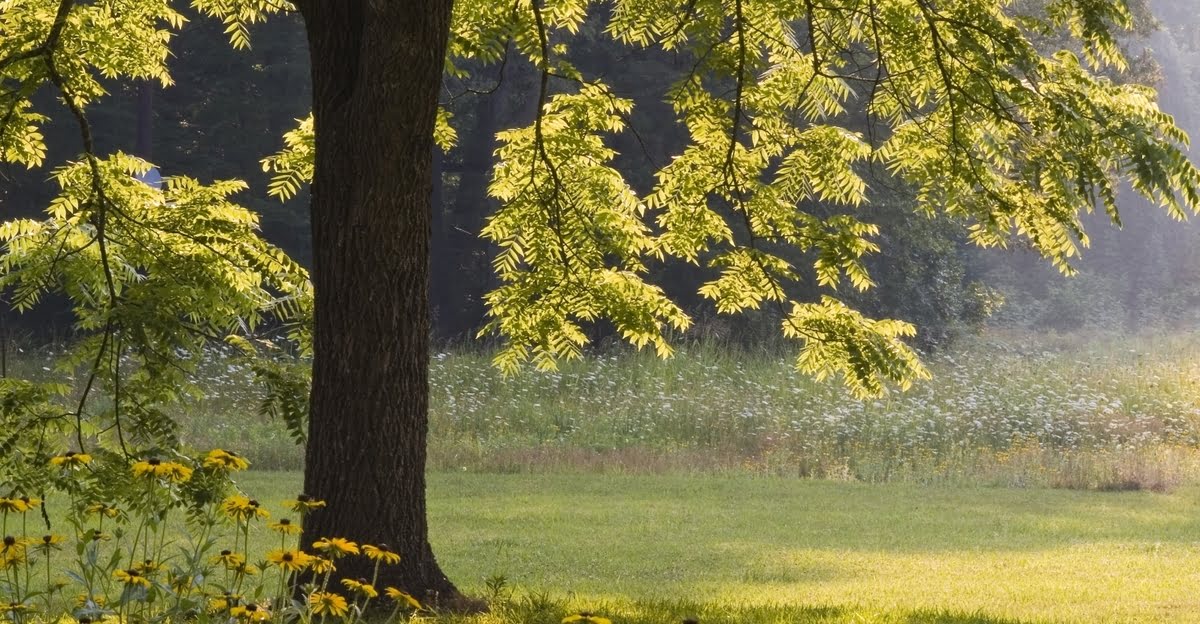Home>Types of Gardening>Edible Gardening>What Herbs Grow Well In Arizona


Edible Gardening
What Herbs Grow Well In Arizona
Modified: January 27, 2024
Discover the best herbs for edible gardening in Arizona. From basil to lavender, find out which herbs thrive in the arid climate of the Grand Canyon State.
(Many of the links in this article redirect to a specific reviewed product. Your purchase of these products through affiliate links helps to generate commission for Chicagolandgardening.com, at no extra cost. Learn more)
Table of Contents
Introduction
Welcome to the world of edible gardening in Arizona! Growing your own herbs can be a rewarding and sustainable way to incorporate fresh flavors into your cooking while enjoying the beauty of a thriving garden. With the unique climate and conditions in Arizona, it’s important to choose the right herbs that can withstand the intense heat and dryness.
In this article, we will explore the best herbs for Arizona gardens and provide tips on how to successfully grow them. Whether you’re an experienced gardener or just starting out, we hope this guide will inspire you to embark on your own edible gardening journey.
Arizona’s desert climate presents its challenges, characterized by hot summers, low humidity, and limited rainfall. However, with the right selection of herbs, you can create an oasis of green that will thrive in these conditions. By choosing herbs that are hardy and drought-tolerant, you can enjoy a bountiful harvest throughout the year.
Before we delve into specific herbs, it’s important to note that proper care and attention are essential for the success of any garden. Adequate watering, sufficient sunlight, and well-draining soil are critical factors for healthy herb growth. Additionally, regular pruning and pest control measures will ensure your herb garden flourishes.
Now, let’s explore the top 10 herbs that grow well in Arizona.
Best Herbs for Arizona Gardens
When it comes to choosing herbs for your Arizona garden, opting for those that can withstand high temperatures and limited water availability is key. Here are 10 herbs that thrive in the Arizona climate:
- Rosemary: This aromatic herb is a staple in many kitchens. It loves the full sun and well-draining soil of Arizona. Not only does rosemary add flavor to your dishes, but it also attracts beneficial insects to your garden.
- Basil: Basil is a popular herb known for its fresh, sweet aroma. It grows well in Arizona, especially during the warmer months. Placing basil plants in a sunny spot with good air circulation will ensure a healthy and productive harvest.
- Thyme: Thyme is a hardy herb that can withstand the heat and aridity of Arizona. It prefers well-draining soil and full sun exposure. Thyme adds a delightful earthy flavor to various dishes and can be used fresh or dried.
- Oregano: Oregano thrives in the Arizona climate, making it an excellent choice for your garden. It is a versatile herb that adds a robust flavor to Mediterranean and Mexican cuisine. Oregano is drought-tolerant and prefers a sunny location with well-draining soil.
- Sage: Sage is a resilient herb that can tolerate the extreme conditions of Arizona. It not only adds a savory flavor to dishes but is also cherished for its medicinal properties. Plant sage in a sunny spot and avoid overwatering to promote healthy growth.
- Mint: Mint is a refreshing herb that thrives in the Arizona climate. It is known for its vigorous growth, so it’s best to plant it in containers to prevent it from spreading excessively. Mint prefers partial shade and regular watering to keep the soil moist.
- Cilantro: Cilantro, also known as coriander, is a popular herb in many cuisines. It prefers cooler temperatures, so it’s best to grow it during the milder months in Arizona. Cilantro can tolerate some shade and requires well-draining soil.
- Chives: Chives are a versatile herb that can easily adapt to the Arizona climate. They add a mild onion flavor to dishes and can be used fresh or dried. Chives prefer well-draining soil and can tolerate partial shade.
- Lavender: Lavender is not only a beautiful garden addition, but it also has a delightful fragrance and numerous therapeutic properties. It thrives in the Arizona heat and requires minimal watering once established. Plant lavender in well-draining soil and a sunny location.
- Marjoram: Marjoram is a close relative of oregano and shares its resilience to the Arizona climate. It adds a sweet and slightly citrusy flavor to dishes and can be used fresh or dried. Plant marjoram in well-draining soil and a sunny spot for optimal growth.
Remember to provide these herbs with the care they need, including regular watering and occasional pruning. By selecting these resilient herbs, you can create a flourishing garden that will provide you with an abundant supply of fresh flavors all season long.
Rosemary
Rosemary is a highly aromatic herb that is well-suited for Arizona gardens. Its fragrant needle-like leaves and woody stems make it not just a culinary favorite but also a beautiful ornamental plant. Here’s what you need to know about growing rosemary in Arizona:
Growing Conditions: Rosemary thrives in full sun, so choose a sunny spot in your garden to plant it. It also prefers well-draining soil, so amend the soil with organic matter like compost to improve drainage if necessary.
Watering: While rosemary is drought-tolerant, it’s important to provide regular watering, especially during the establishment period. After that, rosemary can get by with infrequent deep watering, allowing the soil to dry out between waterings.
Pruning: Regular pruning will help keep your rosemary plant compact and bushy. Prune in early spring to remove any dead or damaged branches and promote new growth. You can also shape your rosemary plant to your desired form.
Harvesting: Harvesting rosemary leaves is a simple process. Snip off the sprigs as needed, starting from the outer parts of the plant. Regular harvesting will encourage new growth and keep your rosemary plant healthy and productive.
Uses: Rosemary is a versatile herb that can be used in a variety of dishes. Its strong flavor pairs well with roasted meats, potatoes, vegetables, and even in sweet recipes like rosemary-infused desserts or herbal teas.
Aside from its culinary uses, rosemary has medicinal properties and is known for its ability to improve memory and concentration. The fragrance of rosemary also has calming effects, making it a popular choice for aromatherapy.
With its ability to withstand the hot Arizona climate, rosemary can be a long-lasting addition to your garden. Whether you choose to use it for its culinary or aromatic qualities, growing rosemary in your Arizona garden is sure to add a flavorful and aromatic touch.
Basil
Basil is a popular herb known for its fresh and vibrant flavor, making it a wonderful addition to any Arizona garden. Whether you prefer the classic sweet basil or want to explore different varieties like Thai basil or lemon basil, here’s what you need to know about growing basil in Arizona:
Growing Conditions: Basil thrives in full sun, so choose a sunny spot in your garden where it can receive at least 6-8 hours of direct sunlight each day. It also prefers well-draining soil, so ensure that the soil is loose and fertile.
Watering: While basil requires regular watering, it’s important to avoid overwatering, as it can lead to root rot. Water your basil plants deeply, allowing the soil to dry out slightly between waterings. A layer of mulch around the plants can help retain moisture.
Pruning: Regular pruning of basil is crucial to encourage bushy growth and prevent it from becoming leggy. Pinch off the tips of the stems regularly to encourage branching. You can also harvest basil leaves regularly, which serves as a form of pruning and encourages fresh growth.
Harvesting: Basil leaves can be harvested as soon as the plant has grown sufficiently, usually when it has at least six pairs of leaves. Harvesting basil leaves regularly promotes branching and ensures a continuous supply of fresh leaves for your culinary needs.
Uses: Basil is a versatile herb used in a variety of cuisines. It adds a delightful flavor to pasta dishes, pesto sauces, Caprese salads, and even infused oils and vinegars. Fresh basil leaves can also be used as a garnish or added to summer drinks for a refreshing twist.
Aside from its culinary uses, basil has medicinal properties and is known for its anti-inflammatory and antioxidant benefits. There are also various types of basil, each with its distinct flavor and aroma, allowing you to experiment and explore different taste profiles.
With its ability to grow in the warm Arizona climate, basil can be an abundant and flavorful addition to your garden. Whether you enjoy it in traditional Italian dishes or want to explore its use in other cuisines, growing basil in your Arizona garden is sure to add a fresh and aromatic touch to your culinary creations.
Thyme
Thyme is a versatile and aromatic herb that thrives in the Arizona climate. With its fragrant and flavorful leaves, thyme is a wonderful addition to any culinary dish or herb garden. Here’s what you need to know about growing thyme in Arizona:
Growing Conditions: Thyme loves the Arizona sun, so ensure that it receives at least 6-8 hours of direct sunlight each day. It also prefers well-draining soil, so amend the soil with organic matter like compost to improve drainage if needed.
Watering: Thyme is a drought-tolerant herb and prefers infrequent deep watering. Allow the soil to dry out slightly between waterings, as overwatering can lead to root rot. Once established, thyme requires little water, making it a perfect choice for Arizona’s arid climate.
Pruning: Regular pruning is essential to maintain the shape and density of the thyme plant. Prune in early spring to remove any dead or damaged branches and promote new growth. You can also harvest thyme leaves regularly, which serves as a form of pruning and encourages fresh growth.
Harvesting: Thyme leaves can be harvested as soon as the plant has grown sufficiently. Simply snip off the sprigs as needed. Regular harvesting not only provides you with fresh thyme leaves for cooking but also promotes a compact and bushy plant.
Uses: Thyme is a versatile herb that adds a delightful earthy flavor to dishes. It complements a wide range of savory dishes, including soups, stews, roasted meats, and vegetables. Thyme leaves can be used fresh or dried, depending on your culinary preferences.
Aside from its culinary uses, thyme has medicinal properties and has been used for centuries to soothe coughs, relieve congestion, and promote overall respiratory health. Thyme-infused teas or tinctures are popular remedies for respiratory ailments.
With its ability to thrive in the Arizona climate, thyme can be a reliable and flavorful addition to your garden. Whether you use it in cooking or enjoy its therapeutic benefits, growing thyme in your Arizona garden is sure to enhance your culinary experiences and overall well-being.
Oregano
Oregano is a hardy and flavorful herb that grows exceptionally well in the Arizona climate. Known for its robust taste and versatility in cooking, oregano is a must-have herb for any Arizona garden. Here’s what you need to know about growing oregano in Arizona:
Growing Conditions: Oregano thrives in full sun, so choose a sunny spot in your garden that receives at least 6-8 hours of direct sunlight per day. It can tolerate a variety of soil types, but well-draining soil is preferable to prevent root rot.
Watering: Oregano is relatively drought-tolerant and prefers infrequent deep watering. Allow the soil to dry out between waterings to prevent overwatering. Once established, oregano requires minimal watering, making it a suitable herb for the arid conditions of Arizona.
Pruning: Regular pruning helps maintain the shape and density of the oregano plant. Prune in early spring to remove any dead or damaged branches and encourage new growth. You can also harvest oregano leaves regularly, which promotes a bushy and productive plant.
Harvesting: Oregano leaves can be harvested as soon as the plant has grown sufficiently, usually when it reaches about 4-6 inches in height. Clip the stems as needed, starting from the outer parts of the plant. Regular harvesting promotes new growth and ensures a steady supply of fresh oregano leaves.
Uses: Oregano is a staple herb in Mediterranean and Mexican cuisines, known for its bold and slightly peppery flavor. It pairs well with tomatoes, pasta dishes, grilled meats, and vegetables. Oregano leaves can be used fresh or dried, depending on your culinary preferences.
Aside from its culinary uses, oregano has medicinal benefits and is known for its antibacterial and antioxidant properties. Oregano oil is popularly used as a natural remedy for various ailments, including respiratory issues and digestive problems.
With its ability to adapt to the Arizona climate, oregano can flourish in your garden, providing you with a constant supply of aromatic and savory leaves. Whether you use it in culinary creations or enjoy its medicinal benefits, growing oregano in your Arizona garden is sure to elevate your cooking and personal well-being.
Sage
Sage is a resilient and aromatic herb that thrives in the Arizona climate. Known for its strong flavor and medicinal properties, sage is an excellent addition to any herb garden. Here’s what you need to know about growing sage in Arizona:
Growing Conditions: Sage loves the Arizona sun and requires full sun exposure to thrive. Choose a sunny spot in your garden that receives at least 6-8 hours of direct sunlight per day. Sage is not too picky about soil and can tolerate a range of soil types as long as it is well-draining.
Watering: Sage is a drought-tolerant herb and prefers infrequent deep watering. Allow the soil to dry out between waterings to prevent overwatering, as sage does not like to sit in wet soil. Once established, sage requires minimal watering, making it a perfect choice for Arizona’s dry climate.
Pruning: Regular pruning is essential to maintain the shape and density of the sage plant. Prune in early spring to remove any dead or damaged branches and stimulate new growth. You can also harvest sage leaves regularly, which serves as a form of pruning and encourages fresh growth.
Harvesting: Sage leaves can be harvested as soon as the plant has grown sufficiently. Snip off the leaves as needed, starting from the outer parts of the plant. Regular harvesting promotes a bushy and productive sage plant.
Uses: Sage is widely used in culinary preparations, particularly in dishes with strong flavors like roasted meats, stuffing, and sausages. It imparts an earthy and savory taste to dishes. Sage leaves can also be used to make herbal teas or infused in oils or vinegars.
Apart from its culinary uses, sage has known medicinal properties and is often used to soothe sore throats and alleviate digestive issues. It has also been associated with enhancing memory and mental clarity.
Sage is a hardy herb that can withstand the Arizona heat and dryness, making it a reliable addition to your garden. Whether you use it in cooking or for its medicinal benefits, growing sage in your Arizona garden is sure to add a flavorful and aromatic touch to your culinary creations and wellness practices.
Mint
Mint is a refreshing and versatile herb that thrives in the Arizona climate. With its invigorating aroma and cooling flavor, mint is a wonderful addition to any herb garden. Here’s what you need to know about growing mint in Arizona:
Growing Conditions: Mint loves the Arizona heat but prefers partial shade to protect it from intense sunlight. Choose a spot in your garden that receives morning sun and afternoon shade. Mint can grow in a variety of soil types but thrives best in moist, well-draining soil.
Watering: Mint requires regular watering to keep the soil consistently moist. However, be careful not to overwater, as mint is susceptible to root rot. Water deeply when the top inch of soil dries out, and adjust the watering frequency based on the weather conditions.
Pruning: Regular pruning is essential to keep mint plants compact and prevent them from becoming invasive. Prune regularly to remove any leggy or wilted stems. This will also encourage bushier growth and a more abundant harvest of mint leaves.
Harvesting: Mint leaves can be harvested once the plant is well-established and growing vigorously. Snip off the sprigs as needed, making sure to leave enough leaves for the plant to continue thriving. Harvesting regularly not only keeps your mint plants in check but also promotes fresh growth.
Uses: Mint leaves are commonly used in a variety of culinary delights, including salads, teas, cocktails, and infused water. Mint adds a refreshing and cooling touch to dishes and beverages. You can also use mint leaves as a garnish or in homemade mint sauces and dressings.
Mint has long been valued for its medicinal properties. It is known to aid in digestion, soothe headaches, alleviate nausea, and provide relief from respiratory issues. Mint-infused teas or essential oils are popular remedies for these ailments.
While mint is a vigorous grower, it’s best to plant it in containers to control its spread and prevent it from taking over your garden. This way, you can enjoy the benefits of fresh mint leaves without worrying about it becoming invasive.
With its ability to thrive in the Arizona climate, mint can be a delightful addition to your garden. Whether you use it for culinary purposes or enjoy its health benefits, growing mint in your Arizona garden is sure to add a refreshing and aromatic touch to your dishes and beverages.
Cilantro
Cilantro, also known as coriander, is a popular herb in many cuisines around the world. With its distinctive flavor and vibrant aroma, cilantro is a valuable addition to any Arizona garden. Here’s what you need to know about growing cilantro in Arizona:
Growing Conditions: Cilantro prefers cooler temperatures, so it’s best to plant it during the milder months in Arizona. Choose a spot in your garden that receives partial shade, especially during the hot afternoon hours. Cilantro requires well-draining soil enriched with compost or organic matter.
Watering: Cilantro prefers consistently moist soil, so make sure to water it regularly. However, avoid overwatering, as cilantro is prone to fungal diseases. Water deeply and allow the soil to dry out slightly between waterings. Mulching around the plants can help retain soil moisture.
Pruning: Regular pruning helps prevent cilantro from bolting and promotes leafy growth. Pinch off the upper portion of the plant when it starts to produce flowers to divert energy into leaf production. Regular harvesting of leaves also encourages fresh growth.
Harvesting: Cilantro leaves can be harvested as soon as the plant has developed enough foliage, usually when it reaches a height of about 6-8 inches. Harvest the outer leaves and stems as needed, allowing the inner leaves to continue growing. Be mindful not to remove all the leaves at once, as this will hinder further growth.
Uses: Cilantro is commonly used as a fresh herb in various dishes, particularly in Mexican, Indian, and Asian cuisines. Its bright and citrusy flavor adds a zesty kick to salsas, curries, stir-fries, and salads. Cilantro leaves are also a popular garnish.
Aside from its culinary uses, cilantro has health benefits and is rich in antioxidants and vitamins. It is believed to aid in digestion, fight inflammation, and support heart health. Cilantro leaves can also be steeped in hot water to make a refreshing herbal tea.
Although cilantro has a relatively short lifespan before it bolts and flowers, successive plantings every few weeks can ensure a constant supply of fresh leaves throughout the growing season. Harvesting leaves regularly and providing the right growing conditions will help prolong the harvest.
With its unique flavor and versatility, cilantro can bring a burst of freshness to your dishes. Whether you use it in traditional recipes or experiment with new flavors, growing cilantro in your Arizona garden is sure to elevate your culinary adventures.
Chives
Chives are a versatile and easy-to-grow herb that thrives in the Arizona climate. With their mild onion flavor and slender green shoots, chives add a delightful touch to a wide range of dishes. Here’s what you need to know about growing chives in Arizona:
Growing Conditions: Chives prefer full sun but can tolerate some shade, making them adaptable to various areas in your garden. Choose a spot with well-draining soil enriched with compost or organic matter. Chives can also be grown in containers if space is limited.
Watering: Chives require regular watering to keep the soil consistently moist. However, be mindful not to overwater, as they prefer slightly drier conditions. Water the plant deeply and avoid wetting the leaves to prevent fungal diseases.
Pruning: Prune chives regularly to encourage fresh growth and prevent them from becoming too leggy. Snip off the leaves at the base when they reach about 6 inches in height. Regular harvesting not only provides a continuous supply of fresh chives but also promotes a fuller and bushier plant.
Harvesting: Chives can be harvested as soon as the leaves are long and thick enough. Simply snip off the leaves close to the base of the plant. Avoid removing all the leaves at once, as this can hinder further growth. Harvest from the outer parts of the plant and leave the center leaves intact for ongoing growth.
Uses: Chives are a versatile herb commonly used as a garnish or ingredient in many dishes. Their mild onion flavor pairs well with eggs, potatoes, salads, soups, and sauces. Chives can be used either fresh or cooked, and their delicate purple flowers also make an attractive edible garnish.
In addition to their culinary uses, chives also have health benefits. They contain antioxidants, vitamins, and minerals that support overall wellness. Chive-infused vinegars or oils can be used to enhance the flavor of various dishes.
Chives are considered a perennial herb, meaning they can grow year-round in the Arizona climate. They are easy to grow and have a high resistance to pests and diseases. Caring for chives is relatively low-maintenance, making them an ideal choice for both experienced and novice gardeners.
With their lovely flavor and versatility in the kitchen, chives are a welcome addition to any Arizona garden. Whether you use them fresh or dried, their abundance and ease of cultivation will ensure a constant supply of this flavorful herb.
Lavender
Lavender is a beautiful and aromatic herb that thrives in the Arizona climate. With its stunning purple flowers and soothing fragrance, lavender adds a touch of elegance and tranquility to any garden. Here’s what you need to know about growing lavender in Arizona:
Growing Conditions: Lavender loves the Arizona heat and requires full sun exposure for at least 6-8 hours each day. Choose a location in your garden that receives ample sunlight. Lavender prefers well-drained soil with a slightly alkaline pH, so ensure proper soil drainage to prevent root rot.
Watering: While lavender is drought-tolerant and can withstand dry conditions, it’s important to provide regular watering during the establishment period and especially in the hotter months. Water deeply, allowing the soil to dry out between waterings. Once established, lavender requires minimal watering.
Pruning: Regular pruning helps maintain the shape and health of lavender plants. Prune in early spring before new growth emerges, removing any dead or leggy branches and shaping the plant. Harvesting lavender flowers regularly also promotes new growth and encourages more blooms.
Harvesting: Lavender flowers can be harvested when they have fully bloomed and before they start to fade. Gather the flower stalks and cut them just above the foliage. Harvesting lavender not only allows you to enjoy its beauty but also helps maintain the plant’s vitality.
Uses: Lavender is prized for its soothing aroma and is often used in perfumes, potpourri, and aromatherapy. The flowers can also be used in culinary applications, such as baking, tea blends, and flavoring syrups. Lavender-infused oils and sachets are popular for their relaxation and sleep-inducing properties.
Beyond its aromatic and culinary uses, lavender offers therapeutic benefits. It can help reduce stress, anxiety, and insomnia, promoting a sense of calm and well-being. Lavender oil is also known for its antimicrobial and anti-inflammatory properties.
Planting lavender in your Arizona garden not only adds beauty and fragrance but is also beneficial for attracting pollinators like bees and butterflies. It creates a delightful sensory experience and brings a touch of serenity to your outdoor space.
With its ability to thrive in the Arizona climate, lavender can be a vibrant and fragrant addition to your garden. Whether you use it for its aromatic qualities, its culinary uses, or its therapeutic benefits, growing lavender in your Arizona garden is sure to create an enchanting and tranquil atmosphere.
Marjoram
Marjoram is a delightful herb that thrives in the Arizona climate, offering both culinary and medicinal benefits. With its delicate leaves and aromatic flavor, marjoram is a valuable addition to any herb garden. Here’s what you need to know about growing marjoram in Arizona:
Growing Conditions: Marjoram enjoys full sun exposure, so choose a sunny spot in your garden that receives at least 6-8 hours of direct sunlight per day. Marjoram prefers well-draining soil that is rich in organic matter. If you have heavy clay soil, amend it with compost to improve drainage.
Watering: Marjoram requires regular watering to keep the soil consistently moist. You want to avoid overwatering, which can lead to root rot. Water deeply when the top inch of soil is dry, allowing the soil to dry out slightly between waterings.
Pruning: Regular pruning helps maintain the shape and density of the marjoram plant. Prune in early spring to remove any dead or leggy branches and promote new growth. Harvesting marjoram leaves regularly also serves as a form of pruning and encourages fresh growth.
Harvesting: Marjoram leaves can be harvested once the plant has grown sufficiently, usually when it reaches a height of about 6-8 inches. Snip off the leaves as needed, starting from the outer parts of the plant. Regular harvesting promotes new leaf growth and ensures a continuous supply of fresh marjoram leaves.
Uses: Marjoram is a versatile herb known for its sweet and slightly citrusy flavor. It adds a delightful touch to a variety of dishes, including soups, stews, sauces, and roasted meats. Marjoram leaves can be used fresh or dried, depending on your culinary preferences.
Aside from its culinary uses, marjoram has medicinal properties. It is believed to aid digestion, calm the nervous system, and promote relaxation. Marjoram tea is often consumed to soothe an upset stomach or relieve stress.
With its ability to thrive in the Arizona climate, marjoram can be a delightful addition to your garden. Whether you use it in cooking or enjoy its therapeutic benefits, growing marjoram in your Arizona garden is sure to add a fragrant and flavorful touch to your culinary creations and overall well-being.
Tips for Growing Herbs in Arizona
Growing herbs in the unique climate of Arizona can be a rewarding and fulfilling experience. With some special considerations, you can create a thriving herb garden that will provide you with fresh flavors and aromatic delights. Here are some tips to help you successfully grow herbs in Arizona:
- Choose heat-tolerant herbs: Select herbs that are well-suited to the hot Arizona climate. Look for varieties that are known for their drought tolerance and ability to withstand intense sunlight.
- Provide proper sunlight: Most herbs thrive in full sun; however, in the scorching summers of Arizona, some partial shade during the hottest parts of the day may be necessary to protect your plants from excessive heat.
- Ensure well-draining soil: Herbs prefer well-draining soil to prevent root rot. Amend heavy clay soil with organic matter like compost or use raised beds to improve drainage.
- Water properly: Balance is key when it comes to watering herbs in Arizona. While they may need regular watering to survive the heat, overwatering can lead to root diseases. Water deeply but allow the soil to dry out slightly between waterings.
- Use mulch: Apply a layer of organic mulch around your herbs to conserve soil moisture, suppress weeds, and regulate soil temperature. This can be particularly beneficial during the hot Arizona summers.
- Prune regularly: Regular pruning not only helps maintain the shape and size of your herbs but also encourages new growth. Regularly harvest leaves to promote bushier growth and prevent your herbs from becoming too leggy.
- Protect from pests: Arizona is home to several pests that can damage your herb garden. Implement pest control measures such as handpicking pests, using organic insecticides, or introducing beneficial insects like ladybugs or praying mantises.
- Consider container gardening: If you have limited space or want to have more control over your herbs’ growing conditions, container gardening is a great option. It allows you to move your herbs to different locations based on their sunlight and temperature requirements.
- Harvest regularly: Regular harvesting not only ensures a fresh supply of herbs for your culinary needs but also promotes new growth and prevents your plants from going to seed too quickly. Harvesting also helps maintain the health of your herbs.
- Rotate your crops: To prevent the buildup of pests and diseases in the soil, practice crop rotation by changing the location of your herb plants each season. This helps maintain the health of the soil and reduces the risk of plant-specific issues.
Remember, each herb has its own specific requirements, so it’s important to research and understand the needs of each herb you grow. With proper care, attention, and consideration for the Arizona climate, you can create a thriving herb garden that will provide you with an abundant supply of fresh flavors and aromatic delights.
Conclusion
Cultivating an herb garden in the unique climate of Arizona is a rewarding and enjoyable endeavor. By selecting herbs that are well-suited to the arid and hot conditions, you can create a thriving garden that will provide you with fresh flavors, delightful aromas, and even medicinal benefits.
From the hardy and aromatic rosemary to the refreshing mint, each herb brings its unique qualities and versatility to culinary dishes, teas, and even home remedies. Understanding the specific growing conditions and care requirements of each herb is essential to their success.
By considering factors such as proper sunlight exposure, well-draining soil, appropriate watering techniques, regular pruning, and protecting against pests, you can ensure the health and vitality of your herb garden. Container gardening is also a viable option for those with limited space or the need for more control over growing conditions.
Don’t forget the joy of harvesting fresh herbs. Regularly harvesting herbs not only provides you with an ample supply for your culinary creations but also promotes new growth and maintains the overall vitality of the plants.
Whether you’re a seasoned gardener or just starting out, growing herbs in Arizona allows you to add an abundance of fresh flavors and aromatic sensations to your cooking and everyday life. You can create a vibrant and flourishing herb garden with careful consideration of the climate, plant selection, and proper care.
So, roll up your sleeves, get your hands dirty, and immerse yourself in the world of edible gardening. Enjoy the process of nurturing your herbs, experimenting with flavors, and witnessing the beauty of a thriving herb garden—all in the unique and wonderful environment of Arizona.










